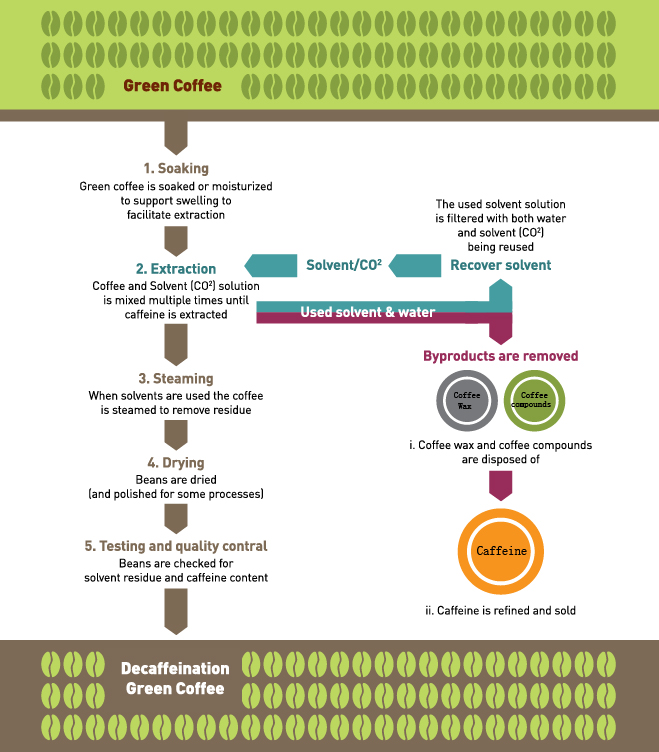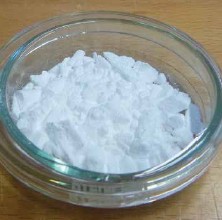EA, an organic compound used frequently as a solvent, is mixed with water and used to soak green beans(multiple times), extracting caffeine.
A similar process as EA using the solvent dicloromethane.
3、Carbon dioxide
Using supercritical carbon dioxide at high pressure to extract caffeine. Or using liquid carbon dioxide, which allows for lower pressure but required more time.
Water as well as an absorbent and activated carbon are used to dissolve and remove the caffeine.
Decaffeination Process
The four different processes have a number of steps in common. Here, we illustrate the progression from regular to decaf. The entire process takes about 24 hours.

Refining natural caffeine from coffee beans. The final product is over 99% pure.
 Pure Caffeine
Pure Caffeine

The largest coffee market, the USA, is also the largest decaffeinated market, consuming approximately 2.4 mio bags in 2014. European decaffeinated use varies widely by nation, with Spain claiming the largest share(20%)at 650k bags a year. The largest European market,Germany, has seen demand fall in the past decade, but use is still near 450k bags. Ten years ago demand in Germany was double current levels. Demand in Asia and emerging markets is very low, but has seen some growth in the recent year. With coffee drinkers wanting to limit caffeine intake and new coffee consumers in Emerging Market Asia, the potential for growth exists.
Caffeine ia an important byproduct of the decaffeination process as it is a valuable commodity used in the soft drink, pharmaceutical, and dietary supplement industries. However, the demand for caffeine(near 20k tonnes a year) far exceeds the supply of natural caffeine from coffee, tea and cocoa(around 4k tonnes). To make up the difference, synthesized caffeine is used, much of it produced in China. The amount of caffeine per coffee bean depends on the variety with Robusta having a higher content than Arabica.
 DECAF (Swiss Water Processed)
DECAF (Swiss Water Processed)

Through a healthy and environmentally safe water-based removal process that preserves the original flavor of the beans more effectively than most other decaffeination methods, while reducing the caffeine content of the coffee to a tiny fraction of one percent. Rich, dark, and buttery, this decaf goes well with milk and breakfast.
Follow us on WeChat: aluokecoffee
关注我们的公众微信: 阿罗科咖啡

Coffee At Your Side - Insight special: Decaffeinated coffee
 Different processes to decaffeinate coffee
Different processes to decaffeinate coffee


